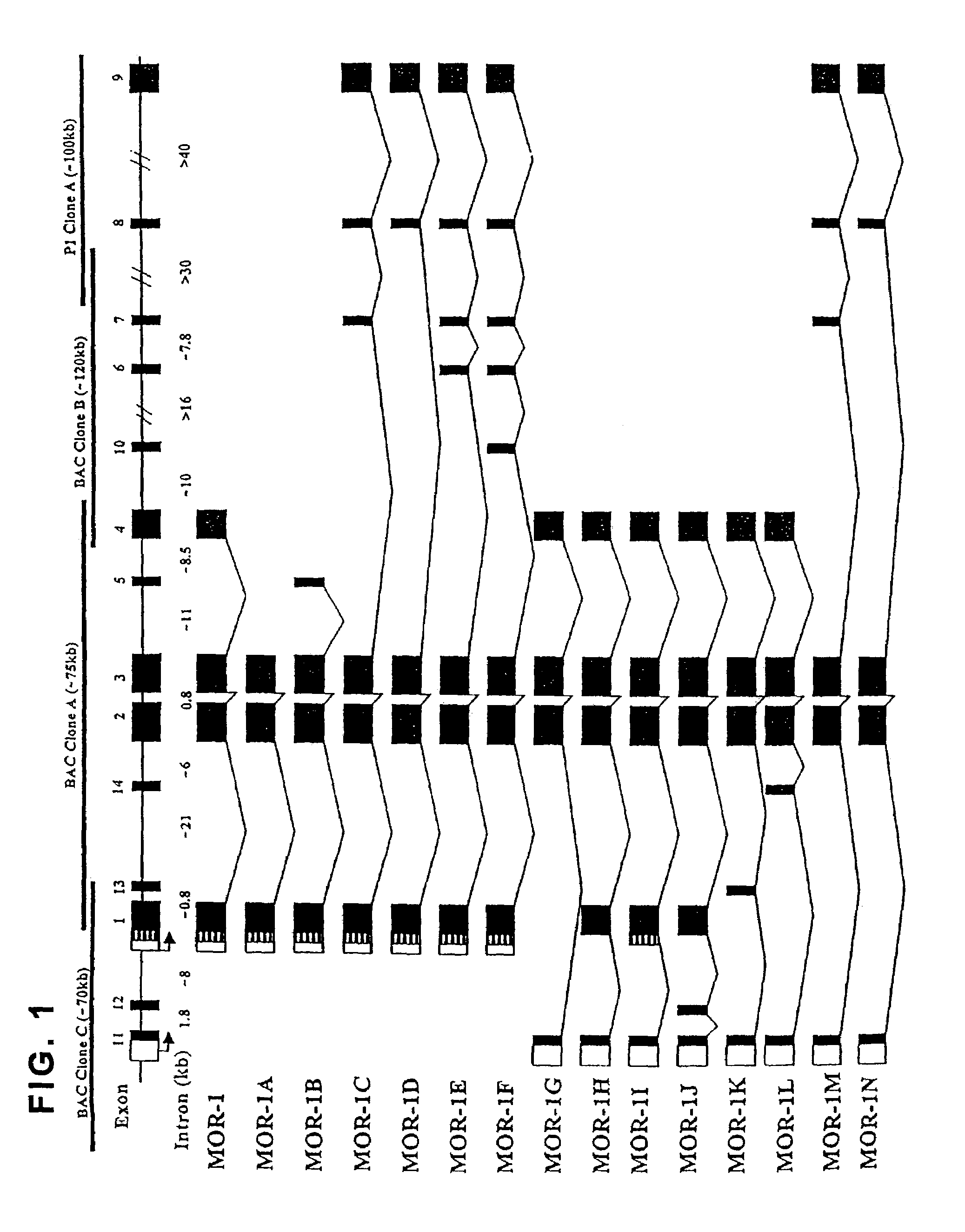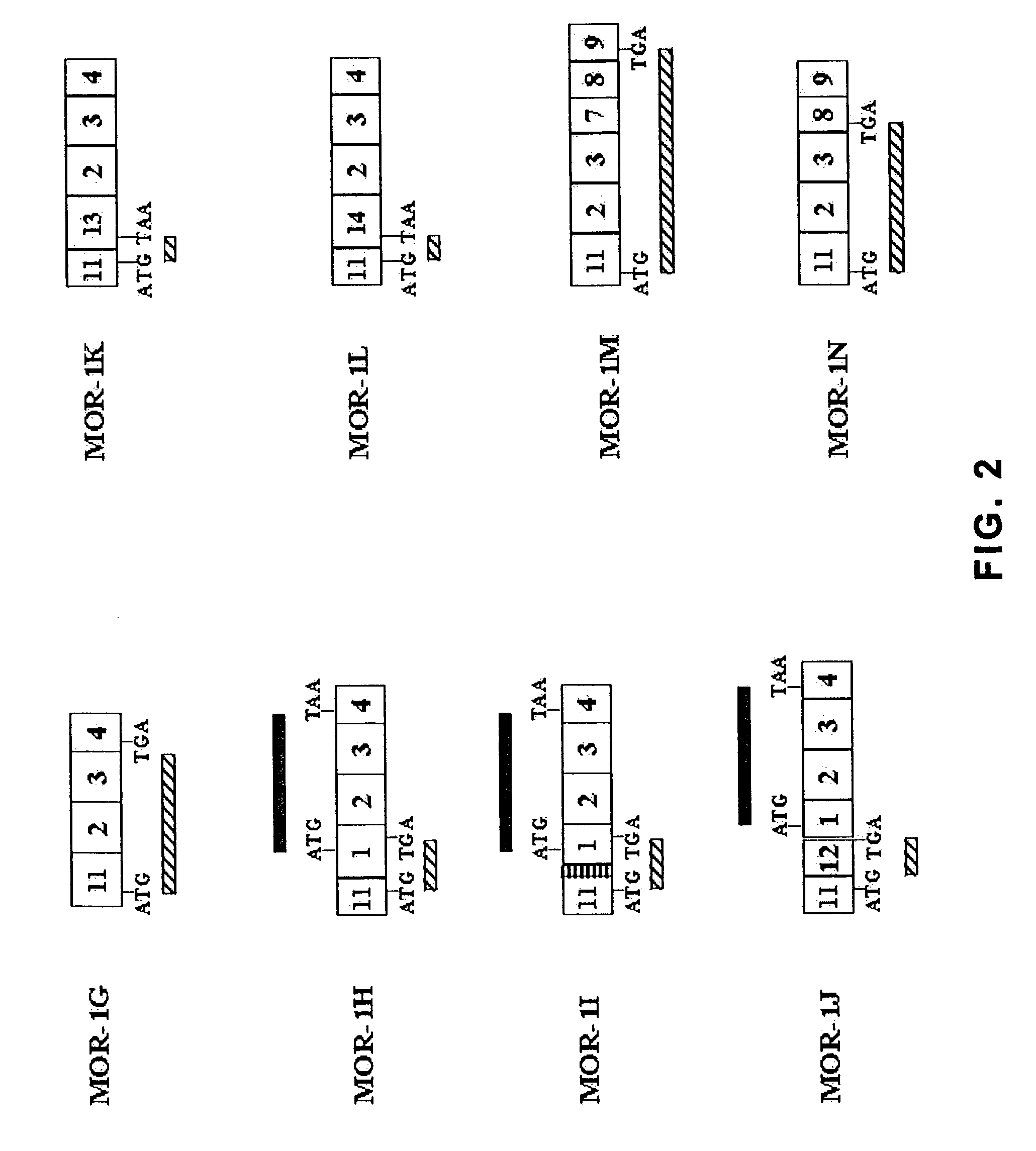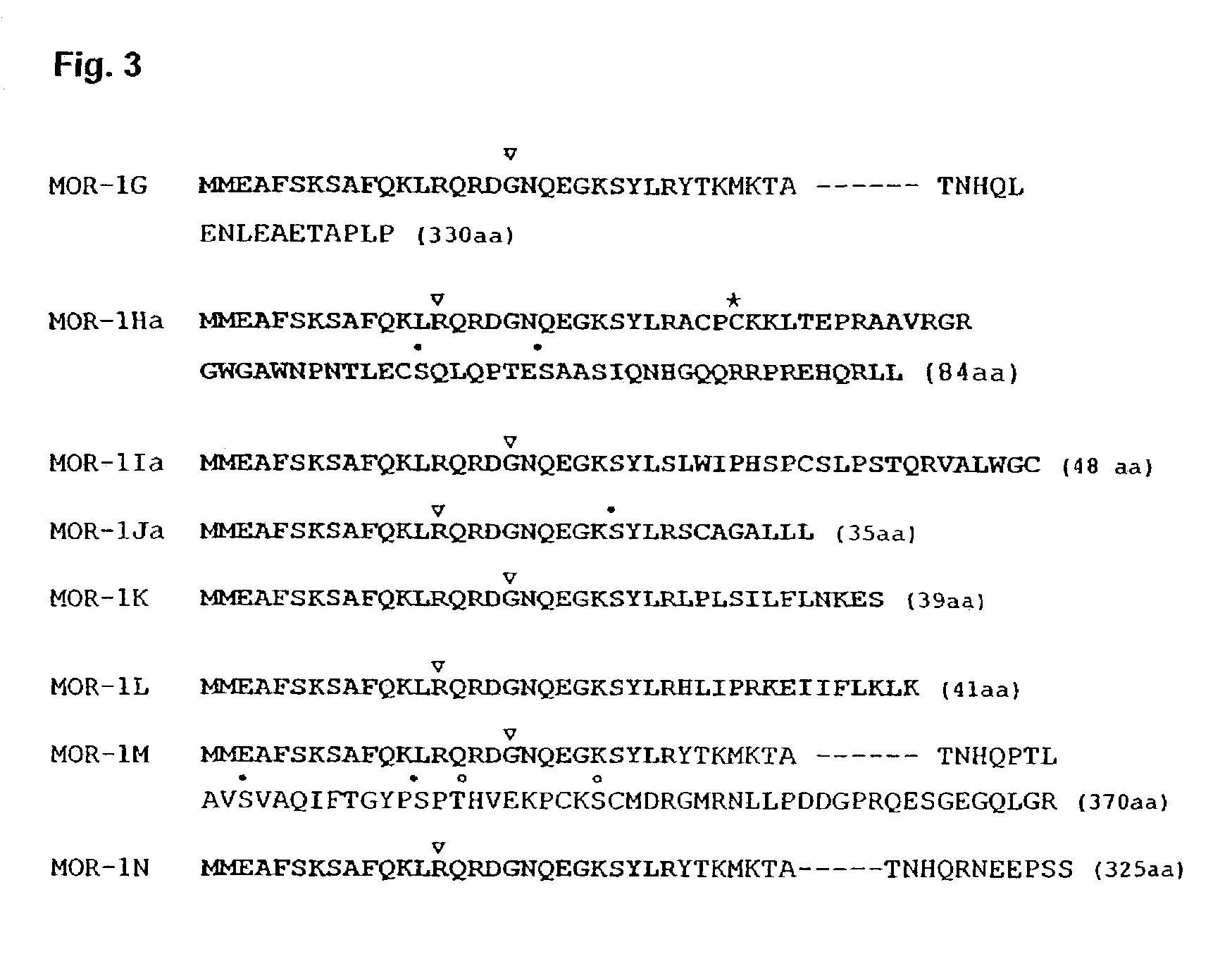Mu-Opiod receptor splice variant polypeptides
- Summary
- Abstract
- Description
- Claims
- Application Information
AI Technical Summary
Benefits of technology
Problems solved by technology
Method used
Image
Examples
example 1
Identification and Cloning of Exon 11
[0135]Using a modified 5′-Rapid Amplification of cDNA Ends (RACE) strategy, a novel exon (exon 11) sequence (SEQ ID NO: 42) that was directly spliced to exon 2 was isolated. Total RNA's extracted from CXBK and C57 Black / 6 mouse brains were reverse-transcribed with random hexamers and oligo dT. The first strand cDNAs then were hybridized with a 5′ biotinylated sense primer designed from exon 3, having the sequence 5′CATGGTACTGGGAGAACCTGCTCA3′ (SEQ ID NO: 1). The hybridized cDNA was captured and purified with magnetic beads covalently coupled to streptavidin (Dynabeads M280 Streptavidin). The purified cDNA was then ligated using a T4 RNA ligase with an adapt primer having the sequence 5′CCCTTCTGTCGTCTTCTCGCAGCCGTA3′ (SEQ ID NO: 2) that had been modified by adding a phosphate group at the 5′ end and an amine group at the 3′ end to obtain an efficient unidirectional ligation. A nested polymerase chain reaction (PCR) was performed with the ligated cDN...
example 2
Identification and Cloning of MOR-1g, MOR-1ha, MOR-1ia MOR-1ja, MOR-1k, MOR-1l, MOR-1m and MOR-1n cDNA Sequences
[0136]To determine whether additional variants also contained exon 11, reverse transcription polymerase chain reaction (RT-PCR) with two sense primers designed from exon 11, sense primer E11A, 5′CCTCCAGGCTCATTTCAGAGAG3′ (SEQ ID NO: 6) and sense primer E11B, 5′GGCGCGGGATCTGGGCCGATGATGGAAGCTTTCTCTAAGTCTGCATTC3′ (SEQ ID NO: 7), two antisense primers from exon 4, antisense primer E4A, 5′CCAGGAAACCAGAGCCTCCCACAA3′ (SEQ ID NO: 8) and antisense primer E4B, 5′GGCGTGGGACCCAGTTAGGGCA3′ (SEQ ID NO: 9) and two antisense primers from exon 9, antisense primer E9A, 5′GAAAGGCATCTTCCCTCTCGCTGT3′ (SEQ ID NO: 10) and antisense primer E9B, 5′CCACACTGCTCACCAGCTCATCCC3′ (SEQ ID NO: 11) was used. Exon 4 is contained within MOR-1 while exon 9 is contained within MOR-1c, MOR-1d, MOR-1e and MOR-1f. No known variants contain both exon 4 and 9. The primers were used in nested-PCRs with the first-stra...
example 3
Mapping, Isolation and Analysis of Genomic Clones
[0140]Since exon 11 was not present in the genomic clones containing exons 1 through 10 previously isolated (Pan et al. (2000); Pan et al. (1999)), an additional clone of approximately 70 kb was identified by PCR from a mouse genomic BAC library with exon 1 primers (GenomeSystems, Inc.). Analyses of the new clone, BAC clone C, by Southern blotting, long PCR and sequencing with appropriate probes and primers indicated overlap between BAC clone C and BAC clone A. BAC clone C contained exons 11, 12, 13 and 1, but not exons 2 through 10 that are further downstream. In BAC clone C, exon 11 mapped approximately 10 kb upstream of exon 1. FIG. 1.
[0141]To establish the gene structure of MOR-1 with the novel exon sequences, a mouse BAC genomic library clone was screened using exon 1 primers and isolated BAC clone C, which was approximately 70 kb. BAC clone C contained exons 11 (SEQ ID NO 42), 12 (SEQ ID NO 43), 1 (SEQ ID NO 44) and 13 (SEQ ID N...
PUM
 Login to View More
Login to View More Abstract
Description
Claims
Application Information
 Login to View More
Login to View More - R&D
- Intellectual Property
- Life Sciences
- Materials
- Tech Scout
- Unparalleled Data Quality
- Higher Quality Content
- 60% Fewer Hallucinations
Browse by: Latest US Patents, China's latest patents, Technical Efficacy Thesaurus, Application Domain, Technology Topic, Popular Technical Reports.
© 2025 PatSnap. All rights reserved.Legal|Privacy policy|Modern Slavery Act Transparency Statement|Sitemap|About US| Contact US: help@patsnap.com



